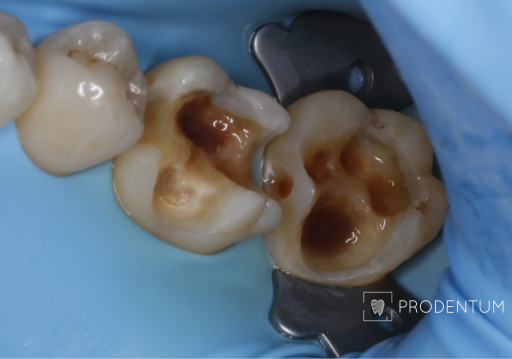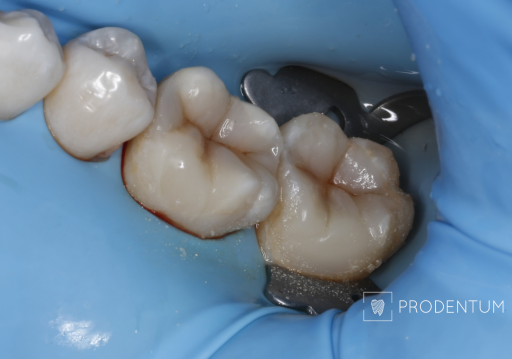
Tooth fillings
Fillings help to remove damage caused by tooth decay. The cause of this damage is plaque.
Small tooth defects are restored using filling materials. Large tooth defects may develop due to various reasons, however, the most common is tooth decay (caries). Fillings help to remove damage caused by tooth decay. The cause of this damage is plaque.


Various tissues are cleaned, tooth anatomy and function are restored.
Treatment of tooth decay is usually done in a single visit. Most often, but now always, local anesthesia is done to reduce patient discomfort. However, the decision to administer local anesthesia depends on the scope of the defect and patient’s wishes.
After the damaged tissues are removed, the cavity is filled using filling material, the bite is adjusted, and the surface is polished so that the patient would be comfortable to chew.
In rare cases, the tooth cannot be treated in a single visit, e. g., due to deep or large cavities. The cavity would be filled using temporary filling material, which would be replaced with a permanent filling material during a subsequent visit. In cases of very deep carious lesions, the cavity may be filled using a therapeutic filling material in order to preserve tooth vitality and avoid root canal treatment. It is very important to continue treatment according to the clinician’s recommendations.
If plaque is not removed after tooth filling, the plaque causes decay at the tooth and filling interface, and the filling may need early replacement. Dental treatment should be performed in a timely manner to avoid large or deep defects. In cases of deep cavities, the pulp of the tooth may become inflamed and require root canal treatment.
When are tooth fillings insufficient, and need to be restored using prosthetics?
Tooth are under heavy load during chewing, and if the defect is very large (only thin walls remaining) or a very large amount of filling material is necessary, usually fillings are not recommended, as the longevity of the restoration is questionable. In these cases, especially after root canal treatment, it is recommended to restore teeth prosthodontically.
What defines high-quality tooth fillings?
The improvement of filling materials allow to expand their area of use, and it has become a more affordable and less invasive treatment option instead of tooth prosthetics. The quality of the filling is very important, the margins need to be smooth in order to avoid plaque accumulation and facilitate cleaning.
A quality filling should not disturb the bite, it should restore the contact point and not restrict jaw movements to the sides. Fillings wear quicker than tooth enamel, therefore they need to be checked regularly. Old or insufficient fillings need to be replaced.
Tooth decay may cause teeth to be sensitive to hot, cold or sweet food. Small defects usually do not cause any symptoms. When the cavity progresses, unpleasant sensations may appear. It is important to note that tooth decay sometimes does not cause any discomfort and patients do not recognize they have a problem. As such, regular visits to the dentist are needed to avoid extensive treatment in the future.
Tooth filling price list
The cost is determined during consultation and may be adjusted during treatment.
Tooth fillings
Name
of service
Price
Price
Prof. med.dr. V. Rutkūnas
Small filling
85,00€
€
Medium-size filling
110,00€
€
Large filling
130,00€
€
Full-crown restoration of molar tooth
170,00 – 200,00 €
€
Cosmetic tooth fillings
Name
of service
Price
Price
Prof. med.dr. V. Rutkūnas
Small filling
95,00€
€
Medium-size filling
130,00€
€
Large filling
160,00€
€
Filling adjustment
60,00€
€
Restoration of tooth edges
100,00-130,00€
€
Full tooth cosmetic bonding
160,00 – 250,00€
€
Polishing
80,00€
€
Other recommended treatments
The ProDentum clinic has a wide range of services and provides patients with the highest level of professionalism.




